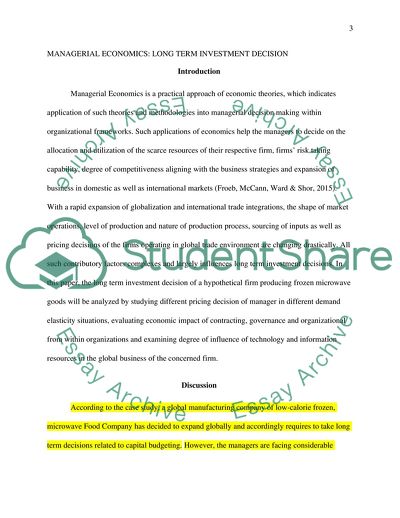Cite this document
(Managerial Economics: Long Term Investment Decision Coursework Example | Topics and Well Written Essays - 2000 words, n.d.)
Managerial Economics: Long Term Investment Decision Coursework Example | Topics and Well Written Essays - 2000 words. https://studentshare.org/macro-microeconomics/1862692-managerial-economics
Managerial Economics: Long Term Investment Decision Coursework Example | Topics and Well Written Essays - 2000 words. https://studentshare.org/macro-microeconomics/1862692-managerial-economics
(Managerial Economics: Long Term Investment Decision Coursework Example | Topics and Well Written Essays - 2000 Words)
Managerial Economics: Long Term Investment Decision Coursework Example | Topics and Well Written Essays - 2000 Words. https://studentshare.org/macro-microeconomics/1862692-managerial-economics.
Managerial Economics: Long Term Investment Decision Coursework Example | Topics and Well Written Essays - 2000 Words. https://studentshare.org/macro-microeconomics/1862692-managerial-economics.
“Managerial Economics: Long Term Investment Decision Coursework Example | Topics and Well Written Essays - 2000 Words”. https://studentshare.org/macro-microeconomics/1862692-managerial-economics.


